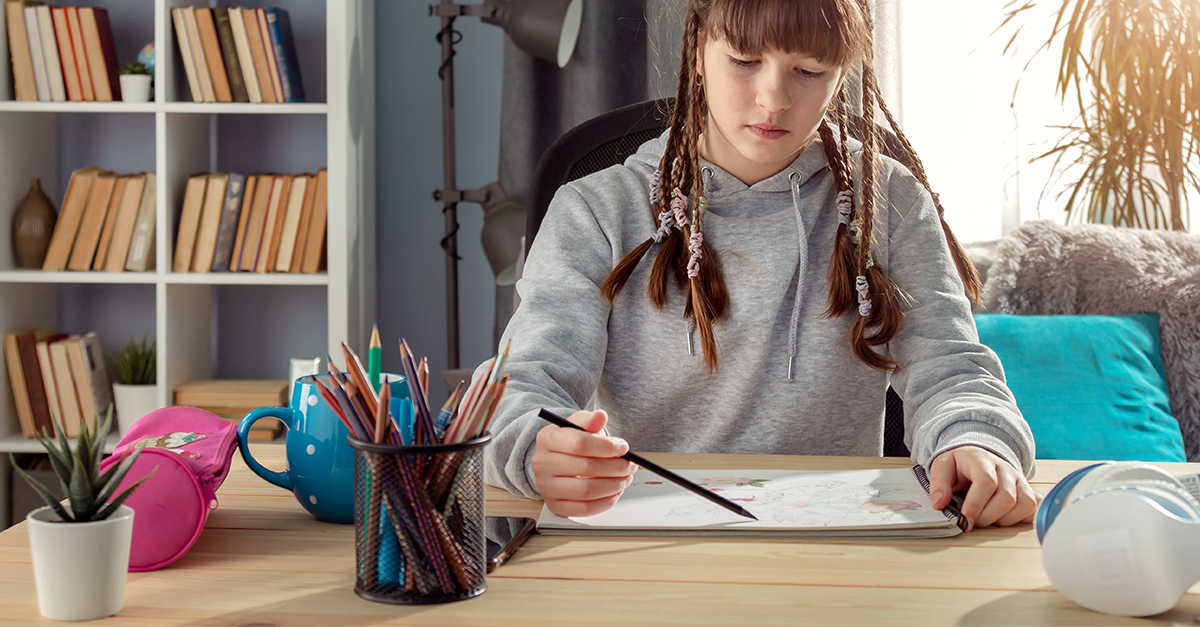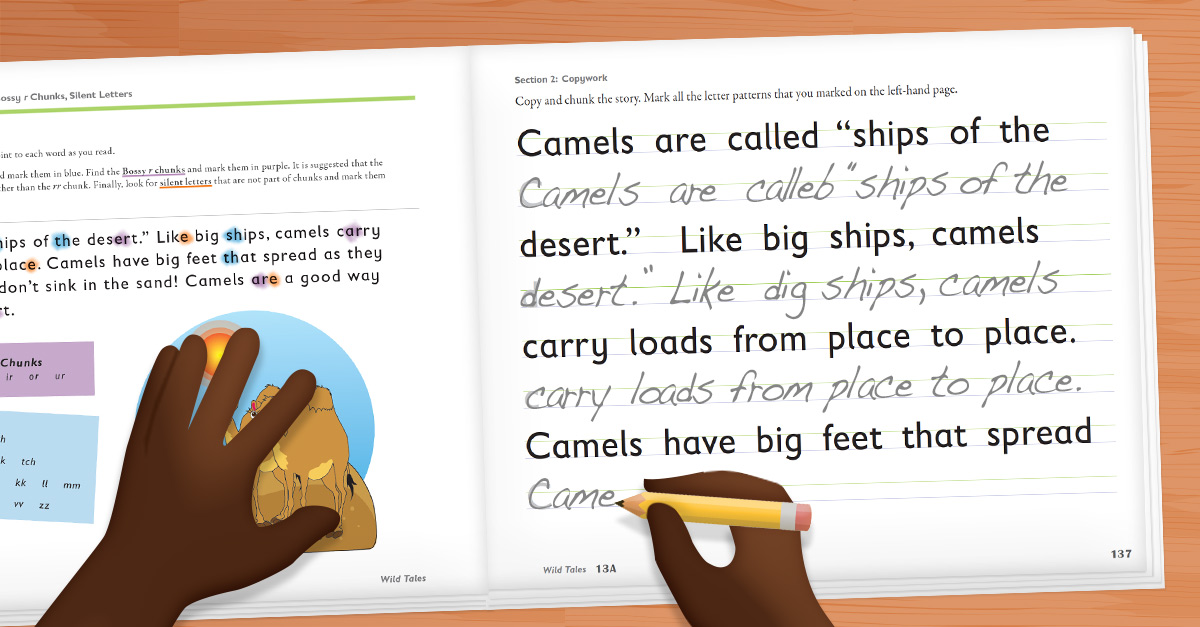While the following information is based on research studies, Demme Learning is not an expert in the area of ADHD or behavioral disorders. This article has not been reviewed by a medical professional.

Students with attention-deficit/hyperactivity disorder (ADHD) may experience more learning challenges than the average student, but there are many ways to help them overcome the obstacles associated with their diagnosis. In this blog post, we’re sharing seven simple strategies for students with ADHD that you can use to help your students be successful in school.
Before we jump into the strategies, though, let’s quickly review what ADHD is and how it can impact learning.
What is ADHD?
Attention-deficit/hyperactivity disorder (ADHD) is a neurodevelopmental disorder that can cause individuals to experience limited impulse control, difficulty focusing, and/or hyperactivity that interferes with their daily functioning. Others with this diagnosis may become hyperfocused on particular interests and activities that increase their dopamine levels.
This range of symptoms typically makes it hard for children with ADHD to sit still and pay attention in school. According to the Centers for Disease Control and Prevention (CDC), nearly 10% of students aged 3–17 in the United States have been diagnosed with ADHD.
Are There Different Types of ADHD?
It’s important to note that ADHD doesn’t present itself the same way in all affected individuals. In fact, you may be surprised to learn that there are actually several different types of ADHD. The main three are predominantly inattentive, predominantly hyperactive/impulsive, and combined.
Let’s take a closer look at these three types:
Predominantly Inattentive
Children with this type are easily distracted and struggle to focus on the lesson or task at hand. They also tend to forget details, routines, and instructions, and can be quite disorganized. However, they don’t exhibit overly active or impulsive behaviors.
Predominantly Hyperactive/Impulsive
This student has a hard time sitting still and staying quiet for long. They may fidget, interrupt others, or start speaking at inappropriate times. While they may have trouble waiting their turn and controlling their urges, they’re still attentive to what’s going on.
Combined
Students possess symptoms of both types mentioned above. They may struggle with inattentiveness or distractibility as well as impulsivity and hyperactivity. Combined ADHD is the most common of the three types.
Knowing the type of diagnosis and ADHD symptoms your student experiences will help inform the ADHD strategies you use to support them.
Teaching Strategies for Students with ADHD
Students with ADHD typically require additional support to do their best in school, both academically and behaviorally. You’ll learn which supportive measures are best for your student based on their unique needs. To get you started, though, here’s a list of seven strategies that can help your student with ADHD succeed.
1) Minimize Distractions
Students with ADHD can be extra vulnerable to distractions. So be mindful of that when setting up your learning environment, limit visual stimuli like clutter, and have your student work away from a window (if it’s distracting).
You should minimize distracting noises as well, such as lyrical music. However, some studies have shown that listening to white noise or other calming sounds may actually help students with ADHD stay on task while doing school work.
Implementing classroom rules that support a distraction-free environment is also helpful. Encourage students to raise their hands or ask politely if they need help, use their materials appropriately, and silence notifications on tablets, laptops, or other devices they might be using for learning.

2) Create a Consistent Routine
All students benefit from having a consistent routine, but this is especially true for those with ADHD. A structured routine makes the school day more organized and predictable, which helps students know what to expect.
Children with ADHD sometimes struggle to switch gears from one subject to another—particularly if they are highly interested in the first subject. Having a schedule can make transitions between lessons and activities run more smoothly. Using tools such as timers, visual signals (e.g. color-changing lights), or verbal cues can also help students manage their time.
Here are a few extra tips for building a successful routine for children with ADHD:
- Post your daily schedule somewhere where students can easily reference it throughout the day and consider printing out a copy that they can keep with them.
- Schedule your trickiest subjects during the time of day when your student is most engaged. This could be first thing in the morning before they lose steam or right after a period of energizing physical activity.
- Whenever possible, give your students a heads-up during instances when you have to adjust the schedule. That way, they feel prepared when the time comes.
3) Provide Brain Breaks and Opportunities for Movement
Many students with ADHD have trouble sitting still for long periods of time. So, be sure to provide frequent opportunities throughout the day for them to get up and move around. This can make a big difference in increasing their ability to focus. Even just a small amount of physical activity can release pent-up energy and increase the oxygen in their brain, which in turn helps them learn.
Now, we’re not saying to have your student run laps around the school room (unless you want to, of course). We suggest trying one of these ideas, instead:
- Allow your students to stand up while they work
- Make your lessons mobile
- Ask them to go pick up your mail
- Have them go get a drink of water
- Let them do 10 jumping jacks in place
- Have a three-minute dance party
4) Give Frequent Feedback and Positive Reinforcement
Children with ADHD benefit from receiving repeated, immediate feedback regarding their behavior. Therefore, it’s important that you encourage your student to make good behavior choices by providing positive reinforcement, either with a kind word of acknowledgment or a small reward. Keep your eye out for these positive behaviors and offer rewards frequently.
On the other hand, if they engage in unwanted behavior, remind them of your expectations. If they choose to continue to make a poor choice, quickly provide a consequence or an incentive to make a better choice. We don’t recommend punishing a student, let alone one with ADHD, by taking away a break or limiting physical activity, as this can be counterproductive.
5) Communicate Directions and Expectations Clearly—and Often
Remember, students with inattentive and combined ADHD may have a hard time following directions. You can combat this by communicating your expectations clearly and more than once.
First, we suggest communicating directions both verbally and in writing. So, before setting your students off to complete a task, make sure that you review the directions with them aloud and provide written directions for them to easily reference.
Check in on your student with ADHD to ensure they understand what they’re expected to do before they start. Then, come back to them a few times to check that they’re following directions, staying on task, and practicing good time management. Provide reminders or redirection as needed, and don’t forget to offer praise!
Bonus tip: giving advance notice and breaking tasks down into steps or smaller chunks can help children with ADHD complete tasks without losing their focus or becoming overwhelmed.
6) Set Them Up With the Right Tools
If your student with ADHD has trouble staying organized, there are many tools and classroom accommodations that can help them get on the right track. Using organizational tools such as color-coded folders, planners, and storage containers can help them keep track of all of their materials and remember due dates and priorities.
Additionally, students who struggle to stay focused or stay still can try using tools like fidgets, squeeze balls, chair leg bands, and yoga balls to provide some movement without causing a disruption.

7) Incorporate Your Student’s Interests
Does your student disengage during certain subjects or activities? Get them tuned into what you’re teaching by incorporating their interests into your lessons. For example, maybe they dislike writing but love outer space. You could play a video of a rocket launch, then ask them to write a fictional narrative about being chosen to join the launch crew.
Of course, you may not be able to do this for every lesson, but the more often you can tie in your student’s interests, the more likely they’ll maintain focus.
The Key to Successful ADHD Strategies
The key point to helping hyperactive and inattentive students succeed in school is to get to know their unique needs, triggers, and interests. Meet them where they are while gradually incorporating some of these proven strategies for students with attention-deficit/hyperactivity disorder. Remember—what works for one student with ADHD may not work for another. So, make note of what does or doesn’t resonate with your student, and always be flexible!
If you’re looking for helpful insight specifically on homeschooling ADHD students, watch this informative episode of The Demme Learning Show about supporting different learners.




This is a great article. The ideas and thought are great and will be used in class . My class is a mixture of ADHD, Ed, and Behavior- Students. I will try to incorporate these ideas in my class. I have 10 students, and believe this will help my class very well.
This a very well written post. Keeping a consistent routine and ensuring that the child is given appropriate amounts of time to move around is crucial. I believe these ideas will help me in my classroom immensely.
As a teacher, I think that this article is great to help with students like this in my class. The article is well written and gives helpful ideas on what you can do to make the learning experience even better for these students.